What’s the first image that comes to mind when you hear the words ‘rooftop garden’?
Maybe it’s the luxuriously themed Kensington Roof Gardens on top of the old Derry & Toms building, now sadly closed.
Or perhaps something more exotic like the fabled Hanging Gardens of Babylon, hailed as one of the Seven Wonders of the Ancient World.

In any event, it’s likely to be an image of a lush, green space which is ideal for relaxation and recreation – in other words, the perfect asset to your home.
At Roofing Superstore, we feel the same way about rooftop gardens. This is why we decided to take a deep dive into the latest garden roof ideas and put together a comprehensive guide on how to create a roof garden.
Without further ado, let’s crack on.
Table of contents:
- What are the benefits of a rooftop garden?
- Do you need planning permission for a roof garden?
- How to make a rooftop garden
- Rooftop garden vs green roof
- Final thoughts
What are the benefits of a rooftop garden?
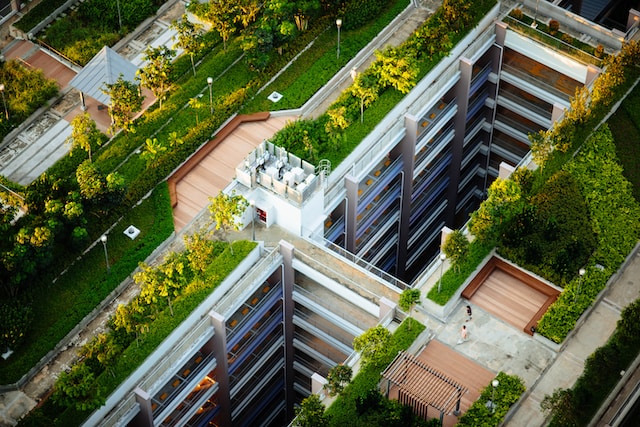
Sure, a roof garden looks and feels great, but that’s just the beginning!
Let’s take a closer look at some of the other benefits rooftop planting comes with.
Make the most of limited spaces
As much as we love our gardens, we don’t always have sufficient space to let our ideas flourish. And this is exactly where roof garden design comes in.
Whether you’re after a full green roof or a small roof garden, you’ll be able to utilise precious space that will otherwise go unused.
Improve air quality
Roof terrace plants like a peace lily will produce oxygen by default, improving the air quality not only on your roof but on your entire property.
As the ever-diligent police constable Nicholas Angel put it in the cult film Hot Fuzz, ‘it oxygenates the room, helps you think, relieves stress’.
What more could you ask for – apart from a beverage of your choice?
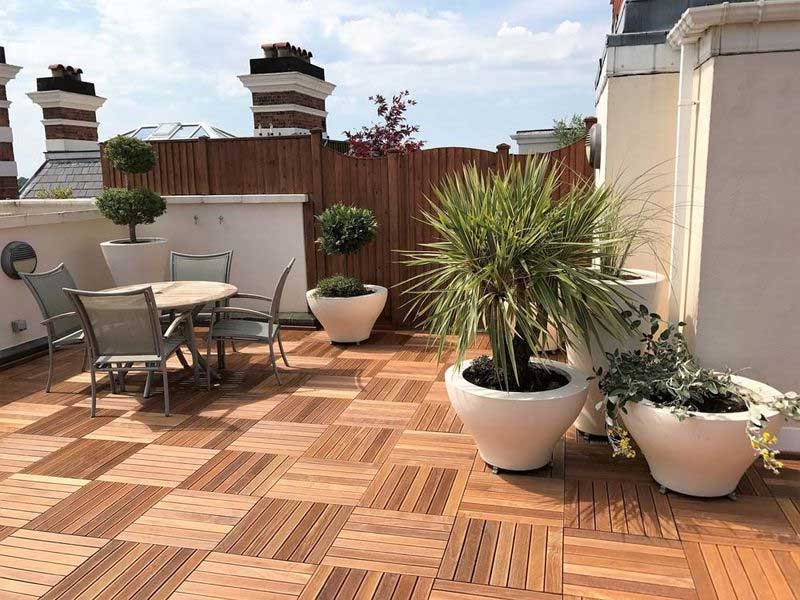
Protect the roof
When exposed to UV rays, most roofs will fade over time. A green roof or a few well-placed floor border tiles alongside your favourite potted plants will naturally avert that, prolonging your roof’s service life.
Reduce the urban heat island effect
The term ‘urban heat island’ (UHI) refers to a city significantly hotter than the surrounding countryside due to an overabundance of concrete and lack of vegetation.
Now:
This might not seem like too big of an issue here in the UK, but we’ve witnessed several heat waves over the last few years due to climate change. And as a recent study by the National Research Council Canada convincingly argues, rooftop gardens could reduce the UHI significantly if they’re widely adopted.

Do you need planning permission for a roof garden?
In most cases, you won’t need planning permission for a roof garden.
That being said:
The first thing you should do is check your title deeds for any restrictive covenants. Next, check if you live in a conservation area. Even if neither applies to you, it’s always best to consult your local authorities.
After all, you don’t want to spend hundreds or even thousands of pounds on sedum, plants, decking and trellises just to find out you have to remove them straight away, right?
But wait! There’s more:
Even if there are no legal impediments, you need to make sure your roof is suitable for a rooftop garden. We recommend that you engage either a structural engineer or a surveyor just to be on the safe side as both rooftop gardens and green roofs can be quite heavy.
How to make a rooftop garden
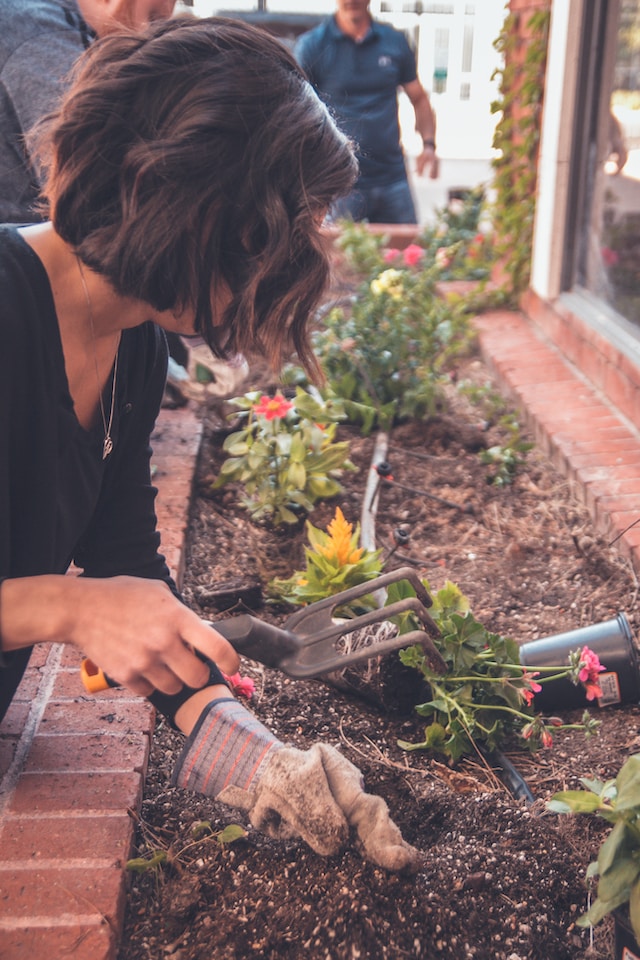
So long as your home’s roof is sturdy enough for the extra weight and it’s waterproofed with an appropriate material, such as mastic asphalt, you can let your imagination run wild!
Here are a few tips to get you going:
Choose your plants carefully
Mediterranean plants like agapanthus and evergreen jasmine are perfect for a rooftop garden. Keep in mind that any of your potted plant arrangement ideas will have to be suitable for a windswept space.
So, consider fitting a trellis or two, ideally paired with a Kentish Belle or Heavenly Blue crawling up it. This will go a long way towards sheltering your rooftop garden from the harsh British winters, especially if you live by the coast.
Pro tip: Use fibreglass pots and planters to reduce weight.
Add a flower bed
This is as simple as it gets! All you’ll need is soil and a timber container – anything from an old chest drawer to a hand-crafted queen-size bed frame will do. When utilising a larger area, we recommend lining it with a plastic sheet and ensuring adequate drainage.
You won’t regret it:
A flower bed will complement your potted plants nicely by attracting bees and facilitating pollination.
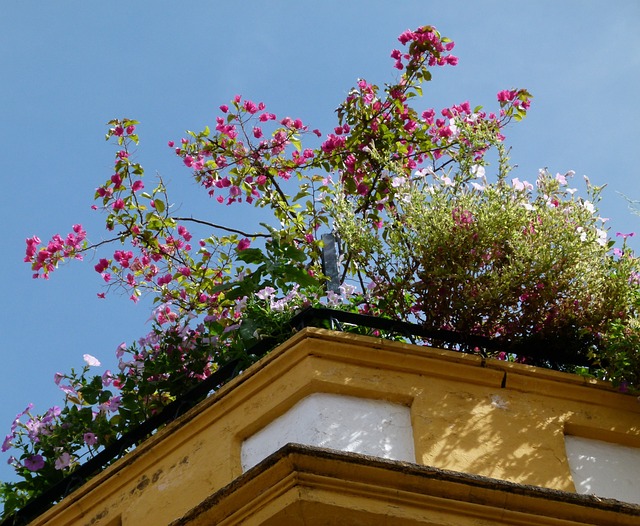
Ensure plentiful water supply
Let’s face it:
Even the most sun-loving plants and flowers need watering. So, you’ll have to make sure you have a sufficient water supply.
Whether you connect a hose or do it the old-fashioned way by fetching a watering can up the stairs to get a few extra steps in, you need to give your garden roof plants just the right amount of moisture.
Get creative with decking
Decking will literally take your rooftop garden to the next level. Nowadays, you have plenty of options, with composite and aluminium decking gaining in popularity alongside traditional timber options.
What’s more:
Decking will provide an extra layer of insulation to keep your home warm during the colder months and help you save money on your energy bills.
Yes, you’ll have to consider the relevant building regulations – especially fire safety.
But as long as you meet them, nothing is stopping you from recreating the Cornish riviera with the help of some colourful gravel and a couple of potted palm trees.
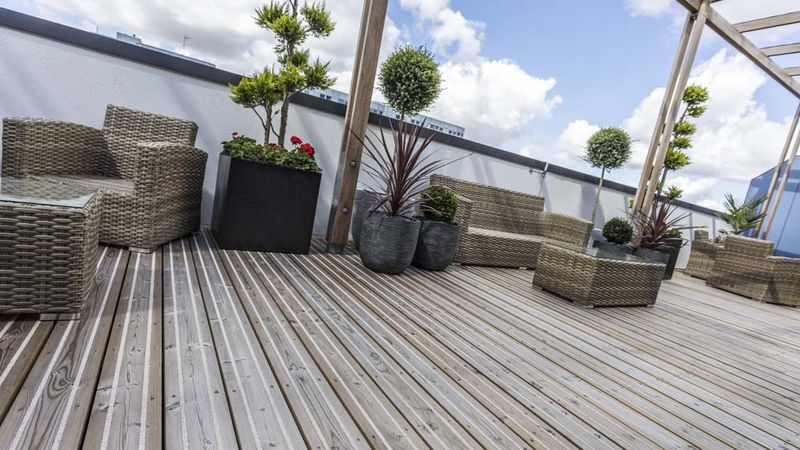
Rooftop garden vs green roof
The terms rooftop garden and green roof are sometimes used interchangeably, but there’s a difference.
The thing is:
A green roof consists of a layer of rooftop sedum which grows to provide a natural habitat for plants, animals and wildlife. Unlike a rooftop garden, which can only work on a flat or low-pitched roof, you can install a green roof on any roof pitch.
On the other hand, we wouldn’t recommend walking on a green roof, as this would disturb the delicate ecosystem.
That being said:
A green roof is a wonderful addition to any home, and you can see how one of our customers transformed theirs in 2020 in this case study.
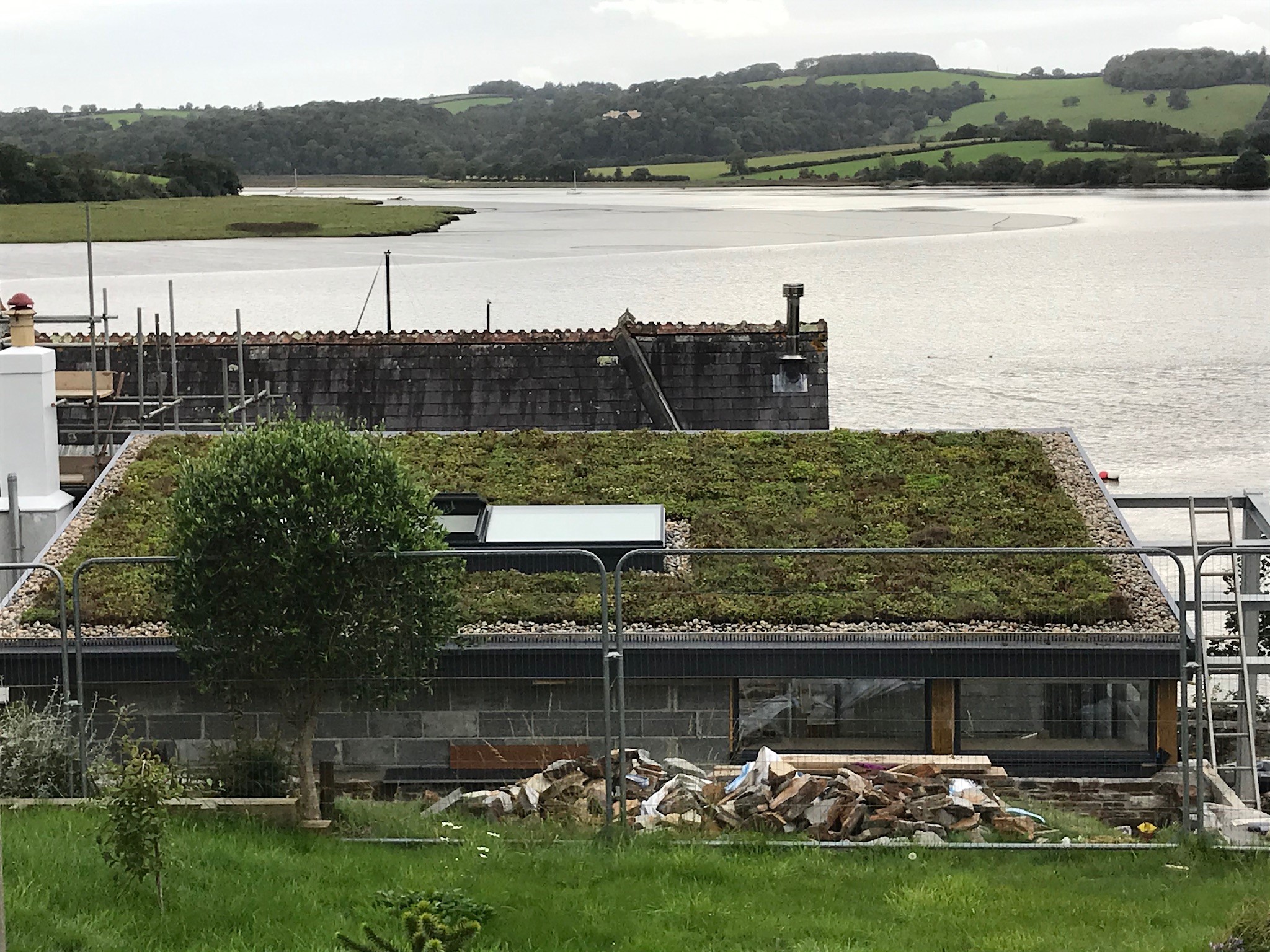
And on that note…
Final thoughts
The future is green – and a rooftop garden is the fastest way to get there!
The bottom line is:
Thanks to the latest garden roof ideas, you don’t have to break the bank to create your very own verdant oasis where you can enjoy those long, lazy British summer days in style.










